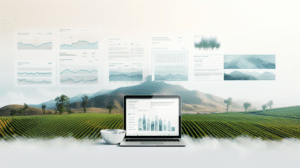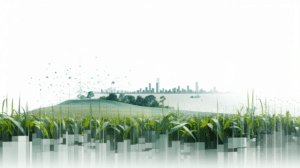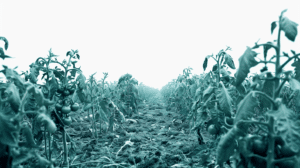Adapting to Climate Change: Droughts Effects
Climate change is undeniably impacting the world’s weather patterns, leading to a rise in extreme weather events that affect agriculture on a global scale. Droughts, once considered infrequent anomalies, have become more frequent and intense, with a staggering 29% increase in their occurrence since 2000. This prolonged lack of rainfall poses significant challenges for farmers, affecting soil moisture, water availability, and ultimately reducing crop yields.
Moreover, heatwaves have tripled in frequency since the 1960s, subjecting crops to prolonged periods of extreme heat. High temperatures accelerate evaporation, causing soil dryness and stressing plants, which can lead to yield losses and even crop failures. As a result, agricultural regions that were once accustomed to specific growing seasons are now experiencing unpredictable and out-of-season storms. These irregular weather events can wreak havoc on crops, leading to damages, losses, and disruptions in planting and harvesting schedules.
The repercussions of these climate-induced changes in weather patterns are far-reaching. Agricultural operations are being severely affected, and farmers are dealing with the need to adapt to this new reality. The uncertainty and volatility in weather conditions make it increasingly challenging to plan and manage crop cultivation effectively.
The Midwest of the United States is currently facing an intensifying drought, raising concerns among local farmers about their crops, particularly corn and grass, which are essential for livestock feed. Vineyards, soybean farms, and strawberry farms are also experiencing drought-related challenges. The soil, already drier than usual due to a dry fall, absorbs moisture like a sponge, even when rainfall occurs. This has a direct impact on consumer prices, as issues with the corn crop will likely lead to increased beef prices in supermarkets. The influence of climate change becomes evident when we observe the rising temperatures in both November and July each year, despite November traditionally being cooler than July. This global phenomenon is causing alarm among scientists, as the implications of a changing climate continue to unfold.
A similar challenge is taking place in Southern Europe. A map of current droughts in Europe compiled by the Copernicus Climate Change Service showed warnings of low soil moisture in many southern regions of the continent in January. The Copernicus Climate Change Service says new solutions must be explored, technologies that use less water, recycle as much water as possible or have a lower footprint on the water that is available.
Italian and French governments recognize the urgency of the situation and are employing severe measures to ensure the efficient and sustainable use of water resources in their respective countries. These efforts are crucial in mitigating the impacts of the water shortage and safeguarding the well-being of their populations.
These are only a few examples. To address these challenges, it is crucial to identify and focus on regions most vulnerable to the negative impacts of climate change on agriculture. By understanding the unique risks and challenges faced by different regions, we can develop tailored strategies to adapt and build resilience. This may involve investing in drought-tolerant crop varieties, optimizing irrigation techniques, and implementing sustainable agricultural practices that conserve water and soil resources.
In addition to region-specific strategies, innovation and technology play a vital role in mitigating the effects of climate change on agriculture. Advanced weather forecasting systems, precision agriculture tools, and data-driven insights can help farmers make informed decisions, optimize resource usage, and improve overall crop productivity.
Ultimately, the consequences of climate change on agriculture are complex and multifaceted. To safeguard food security and support the growing global population, it is imperative that we recognize the urgency of addressing climate-related challenges in agriculture. By prioritizing research, sustainable practices, collaberation and innovative solutions, we can navigate the uncertain climate landscape and ensure a more resilient and secure future for our agricultural systems.








